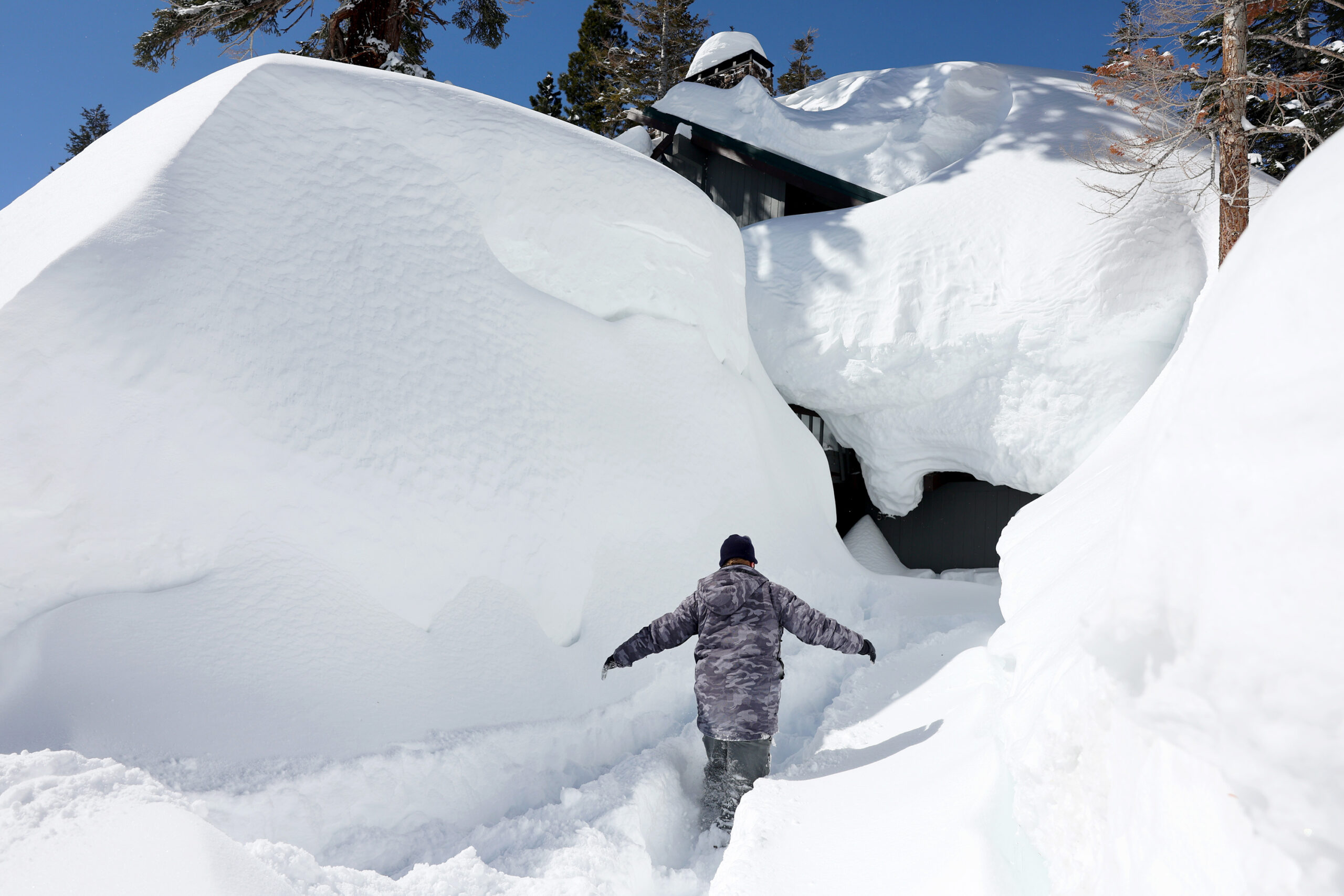California’s snowpack broke historic records this year after endless atmospheric rivers and bomb cyclones doused the state in rain, hail and snow. The storms filled reservoirs across California, and drought conditions have now subsided in more than half of the state, including all of the Bay Area.
As of March 30, California’s snowpack sat at a whopping 236% of its typical April peak, coasting well past the record set in the 1982-83 season. The state’s southern region reported the highest above-average snowpack depth, at 297% of the typical April peak, according to the California Department of Water Resources.
The snowpacks are expected to melt in the coming weeks, as spring weather brings warmer temperatures and sunny skies. This can be good—and bad.
On the one hand, a quickly-melting snowpack could potentially flood low-lying land, putting farmland and local residents at risk. In Tulare, one of the most prolific agricultural counties in the nation, snowmelt flooding has already thrown their farming industry “in limbo” and pushed locals to fortify residential areas against flooding.
“With historic rain and snowpack creating immense challenges for this region, our first priority is protecting lives and livelihoods impacted by this devastating flooding,” said Gov. Gavin Newsom in a press statement Friday. “State officials are on the ground to assist communities, support the local emergency response underway and prepare for the surge of snowmelt runoff in the months ahead.”
Water from the snowpack could also potentially replenish drought-ridden parts of California and benefit farmland in the future.
“California has this super highly engineered water infrastructure where we capture the rain that comes in the winter and deliver it to agriculture when we need it in the summer,” said Ellen Bruno, an agricultural economist at UC Davis. “Having all this snowpack is going to be really great for agriculture during the summer, in terms of the surface water supply.”
Here are some stunning images of the snowpack blanketing regions of California.
